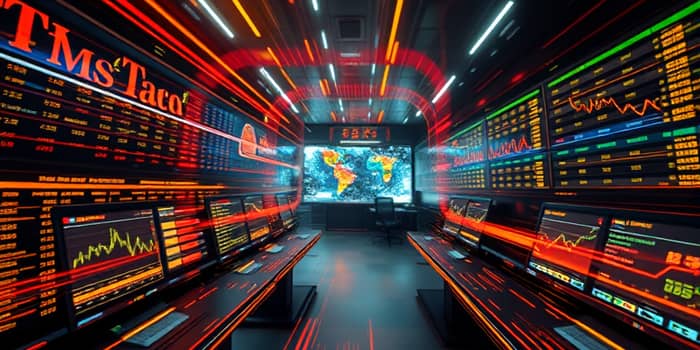
High-frequency trading harnesses lightning-fast algorithms to reshape modern financial markets.
At its foundation, high-frequency trading relies on ultra-low-latency infrastructure across global exchanges and sophisticated software that can process massive streams of data in microseconds. Firms place their servers in close physical proximity to exchange hardware, a process known as co-location, to minimize transmission time. Algorithms then perform continuous real-time market data analysis to detect the smallest price differences across venues. Once a discrepancy appears, the system can execute large volumes of trades within microseconds, capturing tiny spreads before arbitrage opportunities vanish.
These automated systems operate with minimal human intervention after initial setup and supervision. They ingest news feeds, order books, and trade history, leveraging massive computing power for real-time computations. The speed and precision of these machines allow them to take advantage of fleeting market inefficiencies that would be impossible for manual traders to exploit.
High-frequency trading has radically transformed the structure and dynamics of financial markets. Its influence can be both beneficial and contentious, depending on perspective and market conditions.
High-frequency trading firms deploy a variety of sophisticated strategies to capture profits. Among the most common:
High-frequency trading emerged in the mid-2000s, rapidly growing from a niche practice to a market dominant force. In 2005, HFT accounted for approximately 20% of US equity volume. By 2009, advances in networking and co-location enabled adoption to surge, peaking at nearly 60%.
The 2010 Flash Crash remains one of the most dramatic demonstrations of HFT’s power and peril. Within minutes, major equity indices plunged and recovered, a phenomenon partly attributed to algorithmic reactions that lacked human judgment. This incident prompted regulators to introduce circuit breakers and new oversight measures to curtail extreme automated behavior.
Regulators around the world have scrutinized high-frequency trading to ensure market integrity and investor protection. The US Commodity Futures Trading Commission and other authorities continuously assess the impact of HFT on volatility, liquidity, and fairness. Debates focus on whether ongoing regulatory scrutiny and ethical debates should introduce limits on order types or mandatory speed bumps to level the playing field.
While some argue that HFT democratizes access to liquidity and reduces costs, critics counter that the technology arms race advantages only the largest firms and may undermine market confidence during crises. Ethical discussions also question whether profit motives outweigh the potential for systemic risk.
As technology continues to advance, the arms race for speed shows no signs of slowing. Firms invest billions in hardware, algorithms, and connectivity to shave microseconds off execution times. At the same time, exchanges experiment with new trading mechanisms, such as random delays and discrete auctions, aimed at mitigating the outsized influence of raw speed.
Looking ahead, artificial intelligence and machine learning will likely play an increasingly central role, enabling even more complex decision-making and risk management. Market participants and policymakers will need to strike a balance between encouraging innovation and safeguarding stability, ensuring that HFT remains a force for efficiency rather than a source of fragility.
High-frequency trading stands at the intersection of finance and technology, driving remarkable changes in market dynamics. Its ability to capture microscopic profits on volume has reshaped liquidity, spreads, and trade patterns worldwide. Yet the same characteristics that yield efficiency gains can also expose markets to rapid dislocations during stress.
By understanding the mechanisms, impacts, and regulatory challenges surrounding HFT, market participants can navigate this fast-paced environment more effectively. Continued dialogue among traders, technologists, and regulators is essential to harness the benefits of high-frequency trading while mitigating its risks, ensuring that the future of modern markets remains both vibrant and resilient.
References













